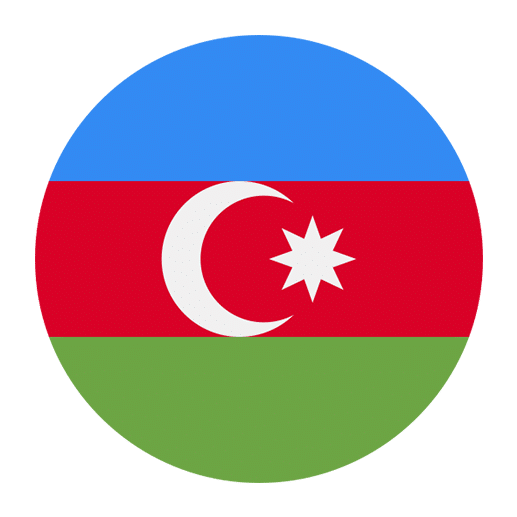Learning a new language can be both an exciting and challenging journey. For English speakers who are delving into Azerbaijani, understanding the nuances of grammar is a critical step. One of the fascinating aspects of Azerbaijani grammar is the use of compound adjectives. These are adjectives formed by combining two or more words to create a single descriptive term. In this article, we will explore how to form and use compound adjectives in Azerbaijani, offering practical tips and examples to help you master this aspect of the language.
Understanding Compound Adjectives
Compound adjectives are combinations of two or more words that function together as a single adjective to describe a noun. In Azerbaijani, just like in English, these combinations are used to provide more specific and detailed descriptions. For example, the English compound adjective “well-known” (as in “a well-known actor”) is similar to Azerbaijani compound adjectives in structure and purpose.
Compound adjectives in Azerbaijani can be formed in several ways, including:
1. **Combining Nouns and Adjectives**: One of the most common methods of forming compound adjectives is by combining a noun with an adjective. For example, “kitab” (book) and “sevər” (loving) can be combined to form “kitabsevər” (book-loving).
2. **Combining Adjectives and Adjectives**: Another method is to combine two adjectives. For example, “şirin” (sweet) and “dadlı” (tasty) can be combined to form “şirindadlı” (sweet-tasting).
3. **Using Affixes**: Azerbaijani also uses affixes to form compound adjectives. This can involve prefixes or suffixes that modify the meaning of the root words.
4. **Combining Verbs and Adjectives**: Sometimes, verbs can be combined with adjectives to form compound adjectives. For example, “görmək” (to see) and “sevən” (loving) can be combined to form “görənsevən” (seeing-loving).
Forming Compound Adjectives
To form compound adjectives in Azerbaijani, it is essential to understand the structure and rules governing their creation. Let’s take a closer look at each method:
1. Combining Nouns and Adjectives
When combining a noun and an adjective, the noun typically comes first, followed by the adjective. Here are a few examples:
– “Kitab” (book) + “sevər” (loving) = “kitabsevər” (book-loving)
– “Göz” (eye) + “əl” (hand) = “gözəl” (beautiful)
– “Gün” (day) + “əşiq” (lover) = “günəşiq” (sunny)
In these examples, the compound adjective provides a more specific description than either word alone.
2. Combining Adjectives and Adjectives
When combining two adjectives, the order of the adjectives can vary depending on the desired meaning. Here are some examples:
– “Şirin” (sweet) + “dadlı” (tasty) = “şirindadlı” (sweet-tasting)
– “Böyük” (big) + “gözəl” (beautiful) = “böyükgözəl” (grand beautiful)
– “Qara” (black) + “uzun” (long) = “qara uzun” (black and long)
In these cases, the compound adjectives enhance the description of the noun.
3. Using Affixes
Affixes play a significant role in forming compound adjectives in Azerbaijani. They can be prefixes or suffixes that modify the meaning of the root word. Here are some examples:
– Prefix “qeyri-” (non-) + “adi” (ordinary) = “qeyri-adi” (extraordinary)
– Suffix “-li” (with) + “yaxşı” (good) = “yaxşılı” (with goodness)
– Suffix “-siz” (without) + “həyat” (life) = “həyatsız” (lifeless)
Affixes allow for the creation of compound adjectives with nuanced meanings.
4. Combining Verbs and Adjectives
Combining verbs and adjectives can also result in compound adjectives. Here are a few examples:
– “Görmək” (to see) + “sevən” (loving) = “görənsevən” (seeing-loving)
– “Bilmek” (to know) + “sevər” (loving) = “bilənsevər” (knowing-loving)
– “Danışmaq” (to speak) + “bacarıqlı” (skillful) = “danışanbacarıqlı” (speaking-skillful)
These combinations create compound adjectives that convey actions or qualities.
Using Compound Adjectives
Once you have formed compound adjectives, it’s crucial to understand how to use them correctly in sentences. Compound adjectives in Azerbaijani follow certain rules in terms of agreement and placement.
Agreement
In Azerbaijani, adjectives must agree with the noun they modify in terms of number and case. This means that compound adjectives should also match the noun they describe. Here are some examples:
– “Kitabsevər tələbə” (book-loving student) – singular form
– “Kitabsevər tələbələr” (book-loving students) – plural form
– “Kitabsevər tələbənin kitabı” (the book of the book-loving student) – genitive case
In these examples, the compound adjective “kitabsevər” agrees with the noun “tələbə” in both number and case.
Placement
In Azerbaijani, compound adjectives are typically placed before the noun they modify. This is similar to the placement of simple adjectives. Here are some examples:
– “Böyükgözəl ev” (grand beautiful house)
– “Qeyri-adi hadisə” (extraordinary event)
– “Şirindadlı yemək” (sweet-tasting food)
The placement of compound adjectives before the noun ensures clarity and proper sentence structure.
Common Compound Adjectives in Azerbaijani
To help you get started, here are some common compound adjectives in Azerbaijani, along with their meanings in English:
– “Kitabsevər” (book-loving)
– “Şirindadlı” (sweet-tasting)
– “Qeyri-adi” (extraordinary)
– “Həyatsız” (lifeless)
– “Görənsevən” (seeing-loving)
– “Danışanbacarıqlı” (speaking-skillful)
– “Böyükgözəl” (grand beautiful)
– “Qara uzun” (black and long)
These examples illustrate the variety and flexibility of compound adjectives in Azerbaijani, allowing you to create vivid and precise descriptions.
Practice Exercises
To reinforce your understanding of forming and using compound adjectives in Azerbaijani, here are some practice exercises:
Exercise 1: Form Compound Adjectives
Combine the given words to form compound adjectives and provide their meanings in English.
1. “Gül” (flower) + “sevər” (loving) = _______________ (flower-loving)
2. “Qırmızı” (red) + “şirin” (sweet) = _______________ (red-sweet)
3. “İş” (work) + “görən” (seeing) = _______________ (work-seeing)
4. “Yaxşı” (good) + “sürətli” (fast) = _______________ (good-fast)
5. “Maraqlı” (interesting) + “kitab” (book) = _______________ (interesting-book)
Exercise 2: Use Compound Adjectives in Sentences
Create sentences using the following compound adjectives:
1. “Kitabsevər”
2. “Qeyri-adi”
3. “Həyatsız”
4. “Görənsevən”
5. “Böyükgözəl”
Exercise 3: Identify Compound Adjectives
Identify the compound adjectives in the following sentences and translate the sentences into English:
1. “Bu kitabsevər tələbə hər gün kitab oxuyur.”
2. “Qeyri-adi hadisə bütün şəhəri heyrətləndirdi.”
3. “Həyatsız çiçəklər bahçəni bəzəmir.”
4. “Görənsevən dostum hər zaman kömək edir.”
5. “Böyükgözəl evdə yaşamaq arzusu var.”
Conclusion
Mastering the use of compound adjectives in Azerbaijani is a valuable skill that enhances your ability to create vivid and precise descriptions. By understanding the different methods of forming compound adjectives and practicing their use in sentences, you can improve your language proficiency and communicate more effectively.
Remember that compound adjectives, like other aspects of language learning, require practice and patience. Take your time to explore different combinations and experiment with creating your compound adjectives. With dedication and effort, you will become more confident in using this grammatical feature in Azerbaijani.
We hope this article has provided you with valuable insights and practical tips for forming and using compound adjectives in Azerbaijani. As you continue your language learning journey, keep practicing and exploring the rich and diverse grammar of Azerbaijani. Happy learning!

